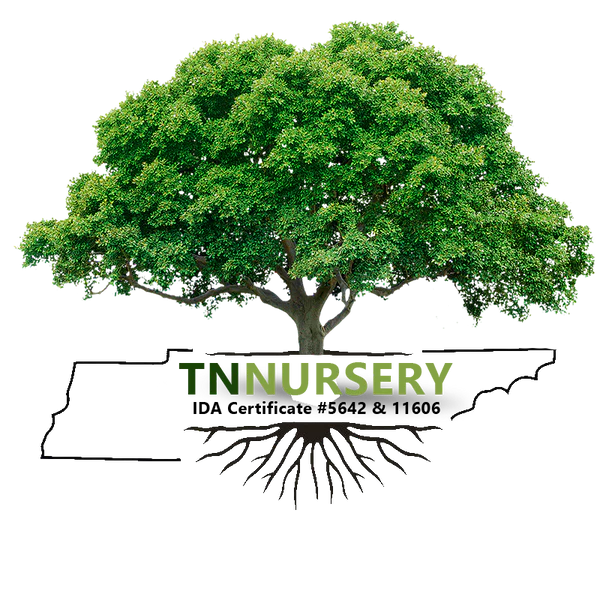Creating a picturesque landscape is a complex process that requires a skillful combination of artistic vision, botanical expertise, and design principles. In this, we will delve into the intricacies of landscape design and show you how to blend the graceful and delicate Ostrich Fern, the vibrant and bold Blazing Star, the sturdy and resilient Bulrush Grass, the majestic and awe-inspiring Sugar Maple Tree, and the fragrant and charming Carolina Allspice to craft a stunning and alluring landscape that not only pleases the eye but also serves a practical purpose.
We will provide:
- Expert advice on arranging the plants.
- Using color contrasts and texture variations.
- Creating focal points and transitions to achieve a harmonious and balanced design.
By the end of this guide, you will have all the knowledge and skills you need to create a landscape that will enchant and inspire all who behold it.
Understanding Your Landscape
Before selecting the plants for your landscape, it is imperative to understand the specific attributes that make your landscape unique. Factors such as the amount of sunlight exposure, soil type, drainage, and climate conditions of your area play a crucial role in determining which plants will thrive in your environment. Therefore, it's essential to consider these factors during the plant selection and design process to ensure your garden is thriving and healthy.
Begin by conducting a site analysis to assess these factors. Observe the patterns of sunlight throughout the day, identify any areas of poor drainage or erosion, and take note of existing features such as trees, rocks, or structures that could influence your design.
Design Principles
Landscape design is an art that involves arranging plants and other elements to create a harmonious and visually appealing composition. To achieve this, designers rely on a set of fundamental principles that guide their work. These include balance, which refers to the distribution of visual weight in the design; proportion, which involves the relationship between different elements in the composition; rhythm, which creates a sense of movement and flow; focalization, which directs the viewer's attention to a specific point of interest; and unity, which ensures that all elements work together cohesively. By applying these principles, designers can create stunning outdoor spaces.
1. Balance: Aim for a balance between symmetrical and asymmetrical elements in your landscape. Consider the visual weight of each plant and how it contributes to the overall equilibrium of the design.
2. Proportion: Ensure that the scale of each plant is appropriate for its surroundings. Avoid overcrowding by giving each plant enough space to grow and thrive.
3. Rhythm: Create a sense of rhythm by repeating patterns and shapes throughout the landscape. This could involve grouping similar plants or incorporating elements such as pathways or borders.
4. Focalization: Establish focal points within the landscape to draw the viewer's eye and create visual interest. This could be achieved through specimen plants, unique features, or strategic placement of colorful blooms.
5. Unity: Tie the various elements of your landscape together to create a cohesive and harmonious whole. Choose plants that complement each other.
Plant Selection Now, let's delve into the specific plants you've chosen for your landscape:
1. Ostrich Fern (Matteuccia struthiopteris): Ostrich Ferns are known for their graceful, arching fronds and lush green foliage. They thrive in moist, shady conditions, ideal for planting in woodland gardens or along streams and ponds. Consider planting Ostrich Ferns in clusters to create a naturalistic look, or use them as a backdrop for smaller, more delicate plants.
2. Blazing Star (Liatris spicata): Blazing Star, also known as Gayfeather, is prized for its striking purple flower points that bloom in late summer. This native perennial attracts pollinators like bees, making it a valuable addition to any garden. Plant Blazing Star in well-drained soil and full sun to partial shade, and consider incorporating it into mixed perennial borders or wildflower meadows for a burst of color.
3. Bulrush Grass (Schoenoplectus spp.): Bulrush Grasses are aquatic or marsh plants that add texture and movement to water features and wetland gardens. Their cylindrical seed heads and slender foliage create a distinctive architectural element. At the same time, their ability to thrive in soggy soil makes them well-suited for rain gardens or shoreline stabilization projects. Choose native species of Bulrush Grass to support local ecosystems and enhance biodiversity.
4. Sugar Maple Tree (Acer saccharum): The Sugar Maple is a majestic deciduous tree valued for its brilliant fall foliage and stately silhouette. It favors moist, well-drained soil and sun to shade, making it an excellent choice for park-like settings, large yards, or naturalized landscapes. Consider planting Sugar Maples as specimen trees or in mixed woodland plantings to provide shade, habitat, and seasonal interest.
5. Carolina Allspice, known by its scientific name Calycanthus floridus, is a shrub as beautiful as it is versatile. With its striking reddish-brown blooms and dense greenery, this plant is a banquet for the eyes and nose alike. The flowers are uniquely fragrant, exuding a sweet, spicy scent reminiscent of cinnamon and cloves. Moreover, Carolina Allspice is a hardy plant that can grow in various soils and light conditions, making it ideal for multiple landscapes. You can plant it near patios, walkways, or windows to enjoy its delightful fragrance or use it as a focal point in mixed shrub borders or cottage gardens. With its combination of beauty, versatility, and fragrance, Carolina Allspice is an excellent addition to any garden.
Design Ideas For Your Landscape
Now that we've explored the characteristics of each plant let's brainstorm some design ideas for incorporating them into your landscape:
1. Woodland Retreat: Create a tranquil woodland retreat by planting clusters of Ostrich Ferns beneath the dappled shade of Sugar Maple trees. Accentuate the naturalistic feel with drifts of Bulrush Grass along the edges of a meandering stream or pond. Intersperse Blazing Star throughout the understorey for pops of color and visual interest.
2. Pollinator Paradise: Design a pollinator-friendly garden by intermingling Blazing Star with other nectar-rich plants such as Coneflowers, Bee Balm, and Butterfly Bushes. Plant Carolina Allspice near seating areas or pathways to enjoy its aromatic blooms up close, and incorporate Sugar Maple trees for height and structure. Add a shallow birdbath or puddling area to attract butterflies and provide water for wildlife.
3. Seasonal Showcase: Create a dynamic landscape that evolves throughout the seasons by selecting plants with diverse colors, textures, and forms. Plant Ostrich Ferns as a backdrop for spring-blooming bulbs such as Daffodils and Tulips, then transition to the summer splendor of Blazing Star and Carolina Allspice. As autumn arrives, the Sugar Maple trees will steal the show with their fiery foliage, while Bulrush Grass adds movement and interest to the winter landscape.
Maintenance Tips For Your Landscape
Finally, consider each plant's maintenance requirements when designing your landscape. Some plants may require regular watering, pruning, or fertilizing to thrive, while others are more low-maintenance. By selecting plants that are well-suited to your climate and site conditions, you can create a beautiful and sustainable landscape.
In conclusion, crafting a stunning landscape requires careful planning, thoughtful plant selection, and adherence to design principles. Incorporating Ostrich Fern, Blazing Star, Bulrush Grass, Sugar Maple Tree, and Carolina Allspice into your layout creates a stunning outdoor space that delights the senses and nurtures the soul. Whether you're aiming to attract pollinators, showcase seasonal beauty, or create a peaceful retreat, the possibilities are endless regarding landscape design. With patience, creativity, and a love for the natural world, you can transform any outdoor space into a work of art.


